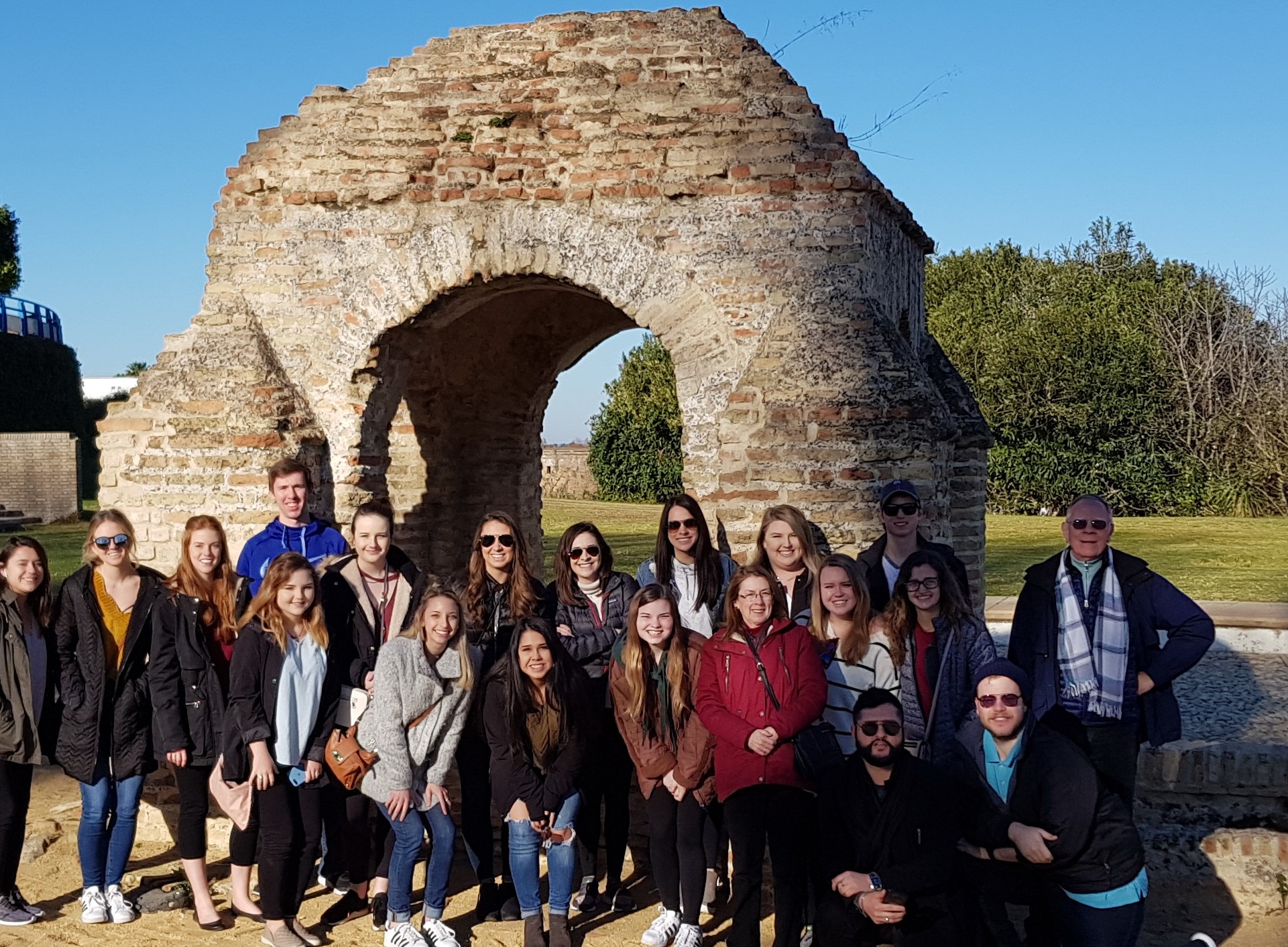Cosas de Sevilla #4, Spring 2018
7 febrero, 2018
Dear Friends and Family of The Texas Tech University Center in Sevilla,
¡Hola once again from Sevilla! Classes went smoothly for the week. Sevilla enjoys mild winters, with little precipitation. We are generally bundled up for the 35-40 degree mornings which jump into the mild 50´s and low 60´s in the afternoon. Native Sevillanos, used to warm/hot weather, think that anything under 50 degrees is time for winter parkas, gloves and scarfs.

This past Friday the group set off for a day trip to places of interest in the neighboring province of Huelva, Christopher Columbus and his voyage to America the main focus of the day. Our first stop was Palos de la Frontera, where Christopher Columbus set sail on his famous journey westward. There we saw the well where Columbus filled up with water the last time before setting out on the open seas. Those who wanted to drink from “Columbus' well” were a bit disappointed to find it has long since dried up, but it served as a good spot for our group picture.
After finishing at Palos de la Frontera we traveled on to La Rábida. There we visited the monastery where Columbus convinced the confessor of Queen Isabel, who was later instrumental in convincing the queen, that Columbus' journey was a worthwhile project. We saw the rooms where some of these famous conversations between Columbus and Friar Pérez took place, and touched an original table where Columbus sat. The monastery, still functioning as such today, also has an interesting collection of art and maps relating to Columbus.
Do you remember your history as to why these new discoveries were called America instead of Columbia or some other exotic name? Columbus died still thinking he had landed a short distance from the Asian Mainland. In the years 1499-1502, Amerigo Vespucci, (mapmaker and navigator), travelled along the coast of South America, and his opinion was that the newly discovered countries were actually a new continent. Humanistic scholars Martin Waldseemüller and Greg Ringmann decided to name the new continent after him. The name “América” first appeared in 1507 on the world map and a terrestrial globe of Waldseemüller and in the associated “Introduction of a Description of the World” by the two above mentioned men. Interesting, no?
We then travelled to the docks where exact replicas of the ships are in a harbor. We were able to climb on and around the ships. Most students were amazed to learn that 80 men were able to survive two plus months on a ship that size, and that is the largest one.
After visiting the monastery, the group headed back to the bus for the drive to Matalascañas, a local beach in Huelva. The students were able to enjoy the beauty of the Atlantic Ocean and spend some relaxing hours before the return trip to Sevilla. A few even dipped their toes in the cold water. Some in the group tried the local beach specialty, the shrimp which still have the eyes (to show they are fresh).
This weekend we will visit Granada, an enchanting town in the Sierra Nevada mountains, with the famous Alhambra. It just keeps getting better and better.
Es todo por ahora
Lorum
Study Abroad
-
Address
601 Indiana Avenue, Lubbock, TX 79409 -
Phone
806.742.3667 -
Email
studyabroad@ttu.edu
